
Near The Fly Shack’s big booth at The Fly Fishing Show in Edison, N.J.
We used to call it just “Somerset,” and now that it’s relocated, we call it just “Edison.” One word is enough when the mammoth expo formally known as The Fly Fishing Show makes its annual stop in the metro New York area.
As always, it’s an overwhelming experience. There’s way more expertise than one could possibly absorb in a weekend. There is aisle after aisle of tempting toys, up-close fly-tying demonstrations by the masters, and lots of catching up with old friends.
I was lucky enough to catch a casting demo by Joe Humphreys, who among other things is the star instructor at the for-credit fly-fishing program at Penn State University. At 90, Humphreys is also one of the most engaging and entertaining celebrities on the fly-fishing circuit. He makes beautiful left-handed casts, he drops to his knees, he cracks jokes, he dispenses rock-solid advice.
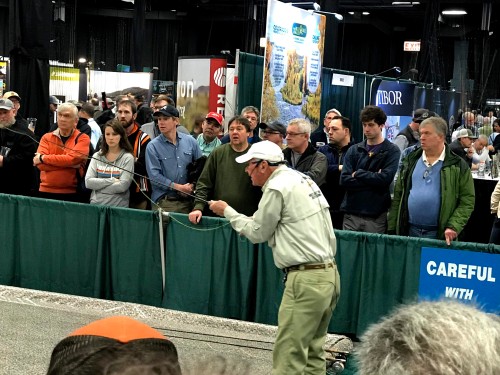
Pennsylvania guru Joe Humphreys demonstrates, and a large crowd hangs on his every word and cast.
Far younger is Landon Mayer of Colorado, one of fly-fishing’s thought leaders these days. Landon won over my inner tenkara geek when he said, “Eighty percent of the trout are caught within 20 feet,” and he demonstrated casting with only about that amount of line out of the guides. Next time I’m using a rod and reel, I will add his “close the fridge door” motion to my forward casting stroke, and strip streamers like I’m strumming a guitar.

Landon Mayer of Colorado didn’t make any hero casts, but his demo surely upped his audience’s game.
I was proud to see Tenkara Today (along with Simple Flies) on display at the expo’s sprawling bookstore. I was also happy to see Karin Miller, founder of Zen Tenkara, giving talks and talking tenkara at her booth. Karin had the tenkara space all to herself. Neither Tenkara USA not TenkaraBum, both of which had exhibited in the past, were present at Edison this year. Karin had also given a great appearance at River Bay Outfitters in Baldwin, N.Y., Long Island’s only dedicated fly shop.

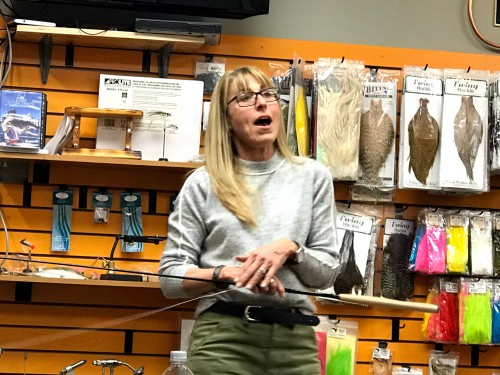
Zen Tenkara founder Karin Miller talking tenkara at River Bay Outfitters on Long Island in advance of the big show.

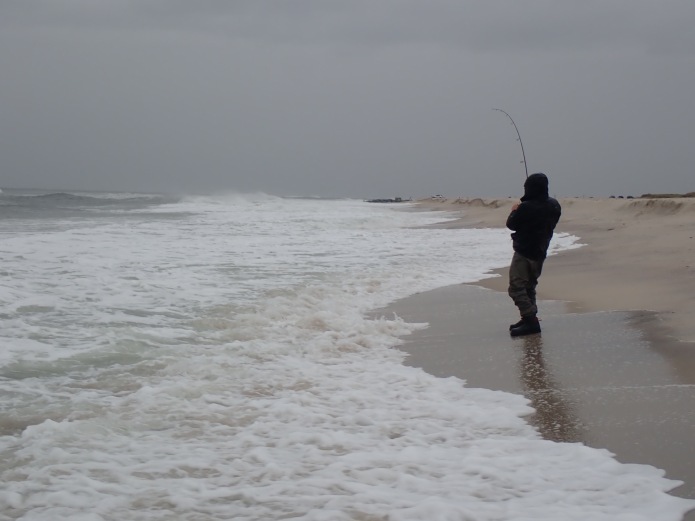
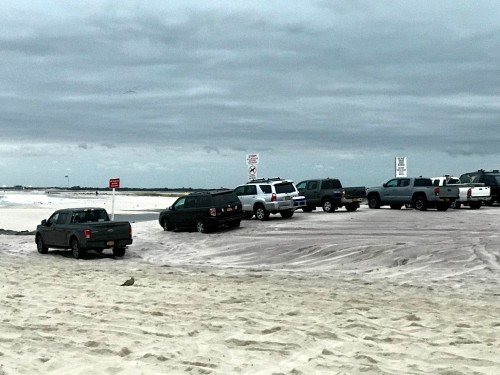

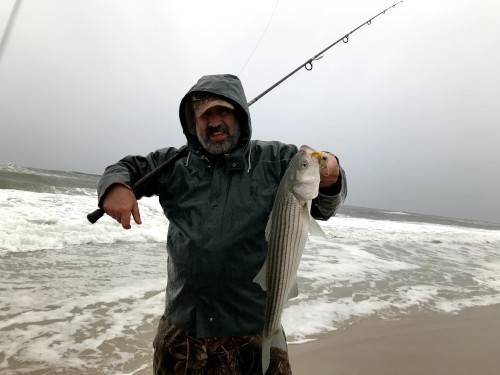
 My right arm was actually sore when we knocked off at 9:30 and re-inflated Joe’s tires at the compressor installed there years ago by the Long Island Beach Buggy Association. (You let half the air out of your tires for better traction on the sand.)
My right arm was actually sore when we knocked off at 9:30 and re-inflated Joe’s tires at the compressor installed there years ago by the Long Island Beach Buggy Association. (You let half the air out of your tires for better traction on the sand.)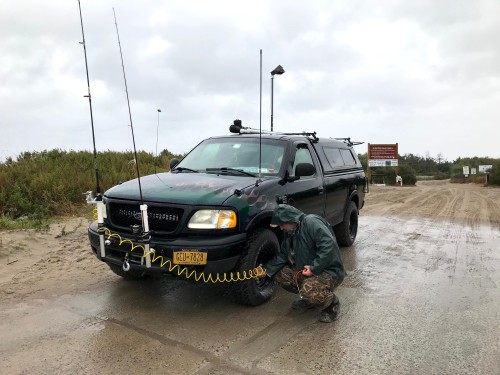

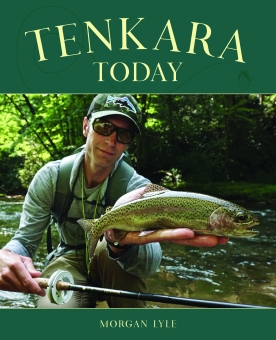 Introducing
Introducing 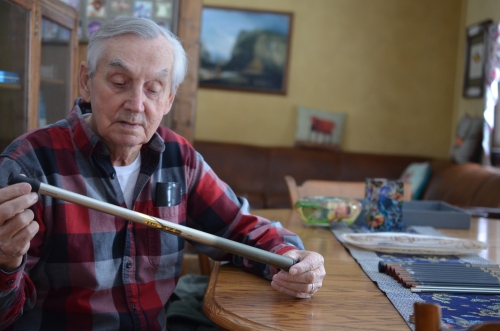
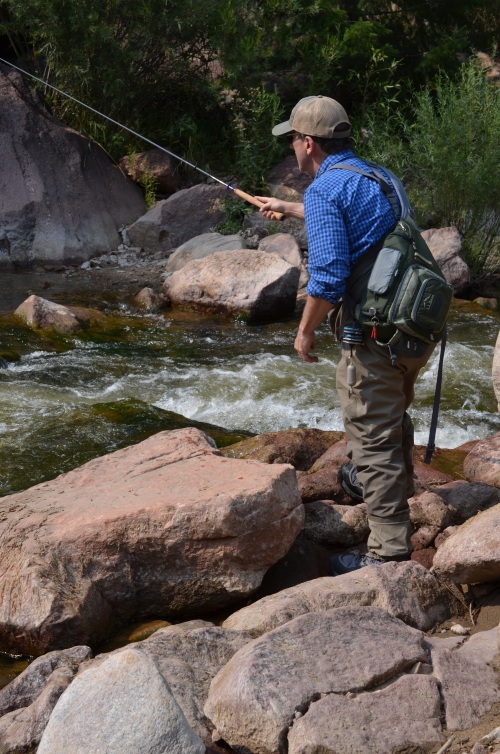

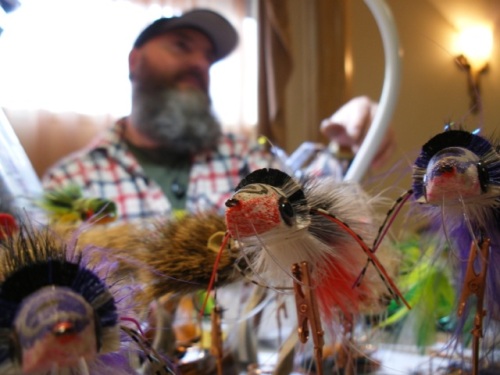
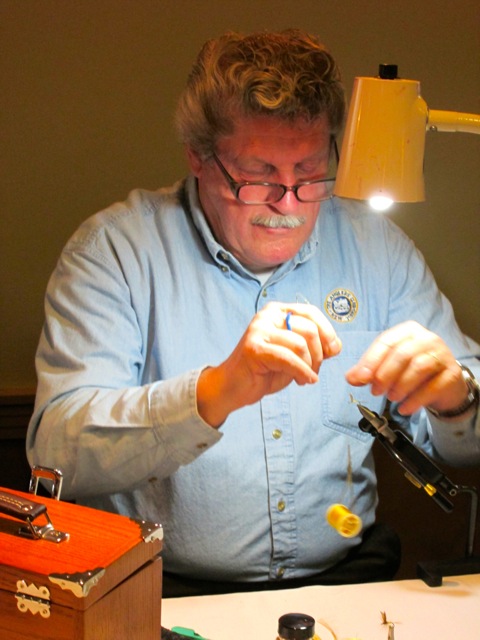
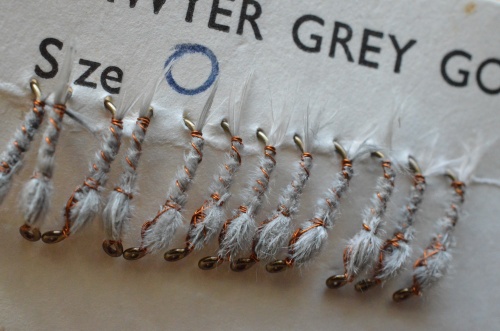 I find it interesting that the bellies of the thoraxes on the Sawyer nymphs aren’t covered with goose; they’re just naked copper wire. I think trout really like copper wire. The Sawyers’ neighbor across the road, Oliver Kite, was a celebrity fly-fisher in England in the 1960s and sometimes fished with what he called the Bare Hook Fly, which consisted of nothing more than a ball of copper wire on the front half of a hook.
I find it interesting that the bellies of the thoraxes on the Sawyer nymphs aren’t covered with goose; they’re just naked copper wire. I think trout really like copper wire. The Sawyers’ neighbor across the road, Oliver Kite, was a celebrity fly-fisher in England in the 1960s and sometimes fished with what he called the Bare Hook Fly, which consisted of nothing more than a ball of copper wire on the front half of a hook.







